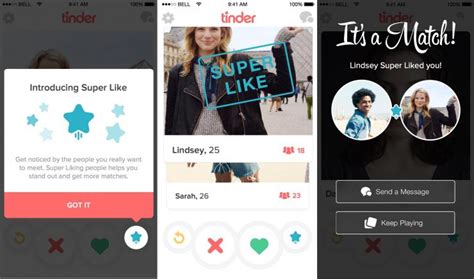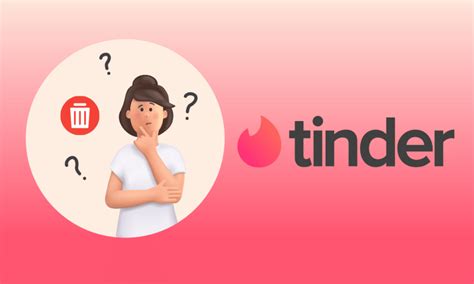Have you ever wondered what those mysterious cards that pop up on Tinder are? Have you seen them, and wanted to know more about them? Well, if so, then you’re in luck! In this article, we’ll be discussing the ins-and-outs of contact cards on Tinder. What do they mean? How can you use them? And why should you care? Let’s dive in and find out!
What are Contact Cards on Tinder?
Tinder is a popular dating app that has revolutionized the way people meet and date. One of its most useful features is the contact card, which allows users to exchange information with each other in an easy and secure way. A contact card is essentially a digital business card that contains all the necessary information about a person, such as their name, age, location, phone number, email address, etc. It also includes a photo and a short bio. The idea behind contact cards is to make it easier for potential dates to get in touch with each other without having to worry about exchanging personal details.
When you match with someone on Tinder, you can send them a contact card. To do this, simply tap on the profile picture and then select “Send Contact Card” from the menu. You will then be prompted to enter your contact information, including your name, age, phone number, email address, and a brief description of yourself. Once you have entered your details, you can then hit the “Send” button to send the contact card to your match.
The recipient of the contact card will then receive a notification telling them that they have received a new contact card. They can then view the contact card by tapping on the profile picture and selecting “View Contact Card” from the menu. If they like what they see, they can then choose to accept or reject the contact card. If they accept it, they will be able to contact you directly via text, call, or email.
Contact cards are a great way to quickly exchange information without having to go through the awkward process of asking for someone’s number or email address. Not only does it save time, but it also ensures that both parties are comfortable sharing their contact information with one another. Plus, it helps protect users from scammers and catfishers who may try to take advantage of unsuspecting victims.
Overall, contact cards are a useful feature on Tinder that makes it easier for users to connect with potential matches. By using contact cards, users can quickly and securely exchange contact information and start conversations with ease. So if you’re looking for a quick and convenient way to exchange contact information with someone you’ve matched with on Tinder, don’t forget to use contact cards!

Swipe Right for Your New Best Friend: The Lowdown on Tinder Contact Cards
- Contact cards are a feature on the popular dating app, Tinder.
- They are used to provide information about yourself in order to make it easier for potential matches to get to know you better.
- Contact cards can include details such as your name, age, job title, location, hobbies, interests, and other personal information.
- This information is displayed in an easy-to-read format that allows potential matches to quickly get to know more about you.
- You can also add links to social media accounts, so potential matches can find out even more about you.
- Contact cards are optional, but they can be helpful in finding compatible matches.
- They can also help to increase the likelihood of someone swiping right on your profile.
Contact cards can be a great way to stand out from the crowd and show potential matches who you really are. They provide an opportunity to showcase your personality and give potential matches a glimpse into your life. By taking the time to fill out your contact card, you’ll be giving potential matches a much better chance at getting to know you before deciding whether or not to swipe right. It’s also important to keep your contact card up to date so that potential matches have access to the most accurate information possible.
When filling out your contact card, it’s important to be honest and authentic. Don’t be afraid to let your personality shine through by adding fun facts or interesting tidbits about yourself. This will help potential matches feel like they already know something about you and will make them more likely to engage with you.
It’s also important to remember that while contact cards can be helpful in making connections, it’s still important to take the time to actually get to know potential matches. Don’t rely solely on your contact card to do all the work – take the initiative and reach out to start conversations. After all, the best way to form meaningful relationships is by having genuine conversations.
Say Goodbye to Swiping: Unlocking the Power of Contact Cards on Tinder
So there you have it! Contact cards on Tinder are a great way to keep your conversations going. They allow you to share contact information with someone without having to give out your number or email address, and they also provide an easy way to connect with someone if you’re interested in learning more about them. Plus, they can help make sure that you don’t miss out on any potential connections. So next time you’re swiping through Tinder, don’t forget to check out the contact card feature – it just might be the key to making a new connection!
Q&A
A contact card usually includes a person’s name, phone number and email address. It can also include their social media links or other info like job title and company. Basically, it’s all the ways you can get in touch with someone!
Tap the profile icon in the top left corner of the main screen. Select “Edit Info” and enter your contact information. Tap “Done” to save changes.
No, contact cards aren’t available for all users. You’ll need to upgrade your membership in order to access that feature. Plus, it’s a great way to connect with other singles!
Yes, you sure can! You can delete or edit your contact card anytime. Just head to the settings page and make any changes you need.



